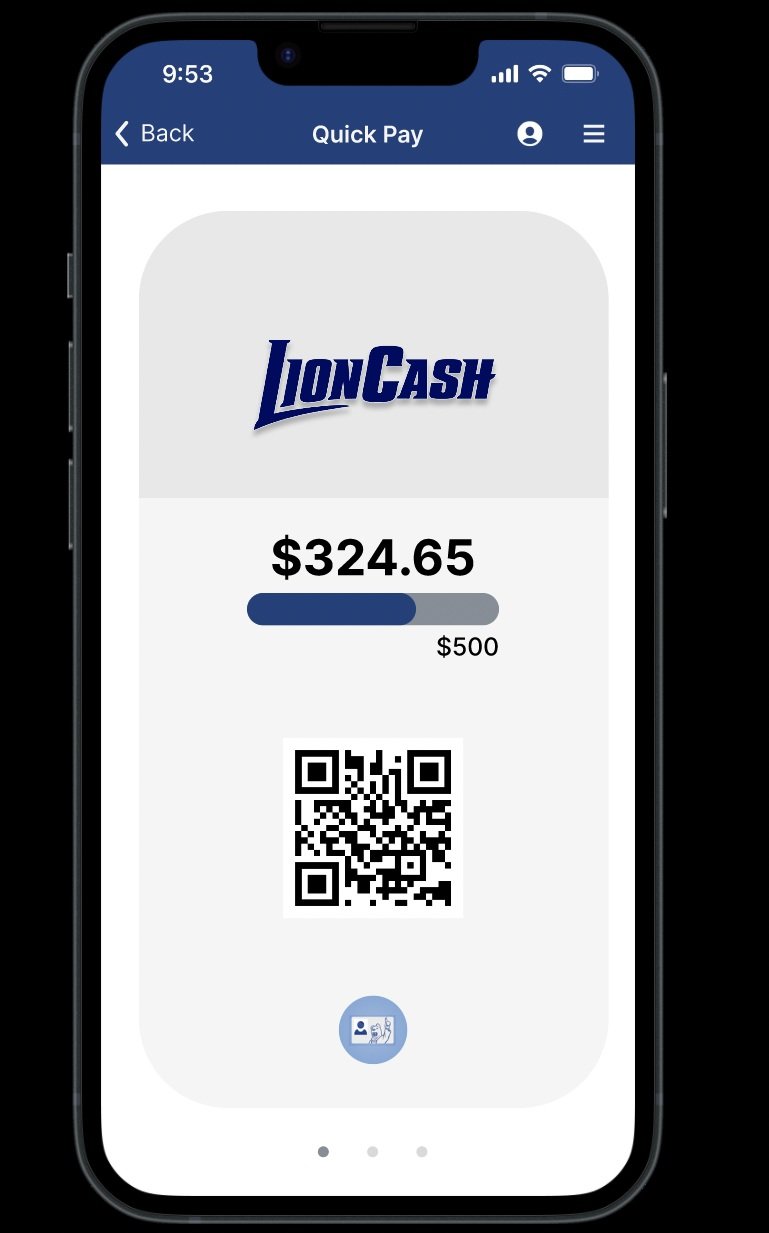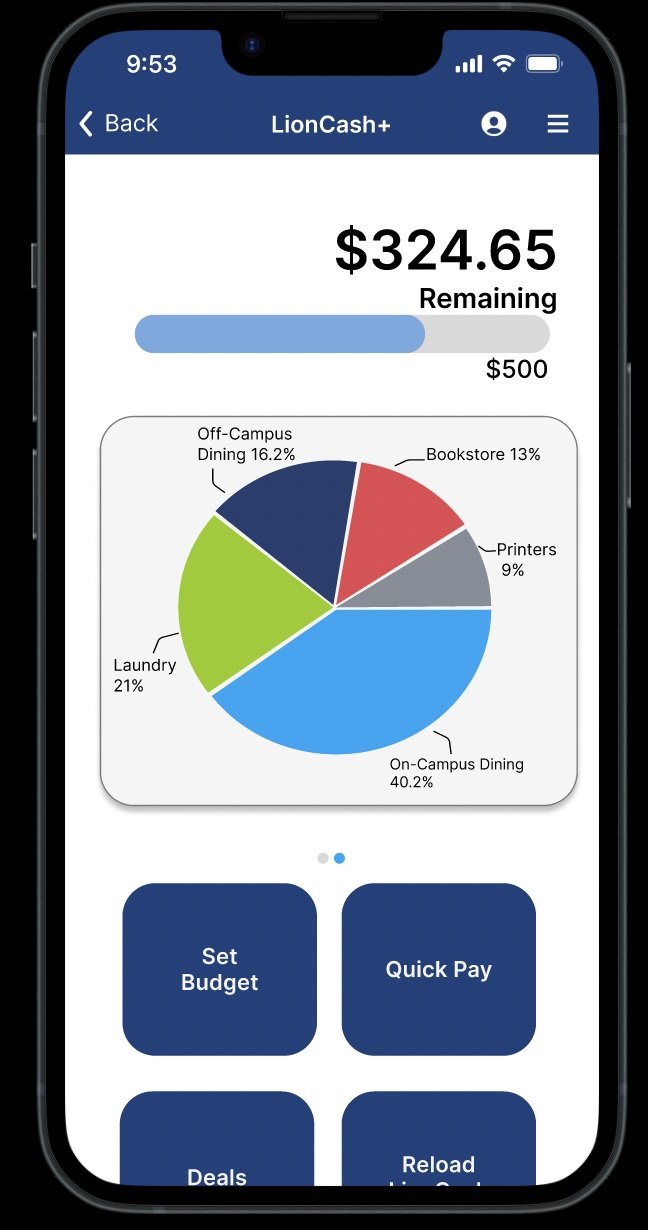
Penn State Go: Dining & Deals
In my capstone course, I collaborated with two other members to enhance the personalized experience of an existing Penn State Application. Our objective was to address the pain points faced by the average Penn State student while using Penn State Go. Through our research, we discovered that one of the major concerns was the lack of convenient access to meal plans, payment options, and budgeting tools on the app. We were allotted 10 weeks to ideate, conduct research studies, interview stakeholders, design, perform user testing, and develop plans for our proposed additions. While adhering to Penn State Go style guidelines and mission.
Our ultimate aim was to present our recommendations to the Penn State Go staff and devise a practical implementation plan.
Background:
CLICK FOR: Demo
Empathize:
Study 1: User-Survey Overview - Using Qualtrics
Participants:
10 Penn State Sophomores (All 5 dorm/dining sections)
Q1: What feature do you use the most on Penn State Go?
Results: Dining - 8, Buses - 1, Other
Q2: How would you describe the state of your dining dollars after your first semester as a 1st-year student?
Results: 50/50 average ran out or at a huge overage
Analysis:
Students underuse Penn State Go because it lacks relevant features
Students need assistance with managing their dining dollars
Study 2: Stakeholder Interview - Discussed with the Lead Developer of Penn State Go
Participants:
USER 5: Penn State Go Product Owner - Mobile & Web
Q: Why are students’ LionCash and meal point balances not available in one dining section?
Business Services has not yet agreed to integrate Lion Cash into Penn State Go
Important Overall Feedback:
“The idea of removing as many taps as possible was most desired”
Convenience of use is integral to user satisfaction
Analysis:
Need to prioritize ease of use, convenience, and familiarity
Define - Problem Statement
When students first arrive at Penn State, they often face challenges in understanding and managing their dining dollars. The existing dining system makes it difficult for them to:
Track usage → Students aren’t sure how much they’ve spent or how much is left.
Plan ahead → They lack visibility into how to pace their dining dollars across the semester.
Make informed choices → Without clear data, many either overspend early (running out of funds before the semester ends) or underspend (leaving unused dollars behind).
This creates frustration, stress, and wasted resources, and it reduces students’ ability to make confident decisions about their meals.
Problem Statement (concise version)
Students at Penn State struggle to manage their dining dollars effectively due to limited visibility and tracking tools. This often results in over-consumption or under-consumption, leading to financial stress, wasted funds, and poor dining experiences.
IDEATE - Process
As the UX designer on the project, I led and participated in several ideation activities to generate a wide range of potential solutions:
Brainstorming & Sketching: Quickly mapped out potential features (budget tracker, daily spending insights, reminders).
Crazy 8’s Exercise: Explored different interface layouts and interaction models within an 8-minute sketch session.
User Journey Mapping: Visualized how a student interacts with dining services throughout a semester to identify where intervention points would be most impactful.
Affinity Mapping: Grouped ideas into categories (tracking, reminders, personalization, social sharing) to identify themes.
Prioritization Matrix: Evaluated ideas based on feasibility vs. impact, narrowing down to the most promising directions.
Key “How Might We” Questions
How might we help students visualize their dining dollar usage in real time?
How might we encourage balanced spending across the semester?
How might we reduce the anxiety of running out of dining dollars unexpectedly?
Outcome of Ideation
From this phase, the strongest solution concepts were:
Dining Dollar Dashboard → A clear, visual overview of current balance, weekly averages, and projected future usage.
Spending Recommendations → Smart insights suggesting how much to spend per week to stay on track.
Notifications & Alerts → Push notifications when spending trends suggest overspending or underspending.
Meal Planning Integration → Optional feature to help students plan meals ahead based on balance.
Design Objective:
Create an add-on application to Penn State Go that provides balance status, dining hall events, and budgeting lessons. This will provide students with an accessible system to manage their dining dollars and promote lasting budgeting skills.
Achieve Four Scenario’s Completed -
Visually Gather Spending + Set Budget
View Meal Plan Info
View LionCash Info
Add Deals to Wallet
Our group developed other features but these four were are main goals and objectives when we gathered feedback for our research study & user testing.






